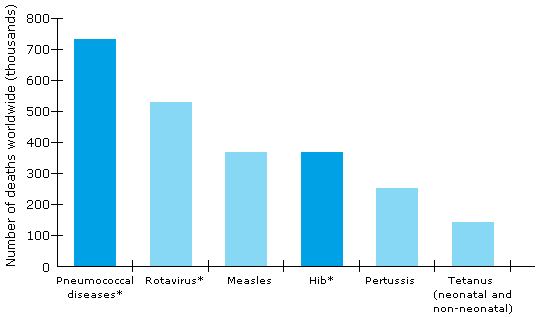More about conjugate vaccines
Conjugate vaccines target several leading causes of vaccine-preventable deaths.
The three most common causes of bacterial meningitis – Neisseria meningitidis (the meningococcus), Streptococcus pneumoniae (the pneumococcus) and Haemophilus influenzae type b (Hib) – are all protected by their polysaccharide capsule from human host defences. These pathogens are now the leading cause globally of vaccine-preventable deaths among children from bacterial infections. Strep. pneumoniae and H. influenzae also the leading causes of child deaths from pneumonia; acute respiratory infections are the leading cause of child deaths.

Since the introduction of Hib vaccine in large parts of Europe, the Americas and Australia, bacterial meningitis from Hib has virtually disappeared.
Further advantages of the conjugate vaccines are their ability to elicit immunological memory and to reduce asymptomatic carriage of the bacteria, resulting in marked herd immunity. Finally, conjugate vaccines have a superb safety record and have been associated with very few, serious adverse events following immunization (AEFIs) after more than 20 years of use. Key advantages of conjugate vaccines compared with polysaccharide vaccines include:
- Improved immune and memory response,
- Longer lasting protection,
- The protection of infants and toddlers,
- Their effect on bacterial carriage,
- The creation of herd immunity.
